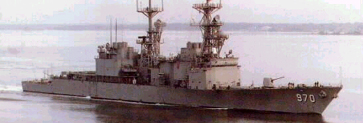By Terry Little
When I was a young project manager, my boss pulled me into his office to tell me I needed to convert our cost-reimbursable development contract to fixed price. Virtually every large cost-reimbursable contract in the department, he explained, was overrunning.
I had my reservations about his solution to the problem. There was significant risk remaining in the program, and I felt a cost-reimbursable contract was appropriate. While I understood we were going to overrun the cost target, I believed the overall cost would still be less than what was allocated for the program.
Shortly thereafter, I met with the contractor’s program manager. I did what I was supposed to, saying that I thought it was best for the program to convert to a fixed-price contract. I got along well with this program manager. He hesitated, but because he trusted my judgment, he agreed and we settled on a price and modified the contract to fixed price.
As it turned out, during development there were a number of technical problems, and solving these resulted in a significant cost overrun to the contractor. Three years later, we were negotiating the production contract and we hit an impasse. The contractor was asking for a lot more money than we were willing to pay. During the negotiations, the same contracting officer I worked with before told me that he realized the price was high, but after what happened in development the company could not afford to lose its shirt again during production. Yet, he added, “because he trusted me,” he would settle on whatever price I came up with.
I went back to my contracting officer and told her that we’d settled at the contractor’s proposed price. It was hardly surprising to me when she hit the ceiling. I explained I would accept full responsibility, and I put it in writing that I thought the price was fair and reasonable.
In the end, the contractor realized a 17 percent profit on the fixed-price production contract, and on the third production buy the price came down substantially. My contracting officer received nothing but praise for her “hard-nosed” negotiating style. What did I get? Nothing, but then I was a young project manager. I did learn, however, to stand up and say, ‘No.’
Editor’s Note: Another article in this issue, Marty Davis’s Horse Trading, offers a different perspective on coping with changes when operating in a fixed-price contract.







